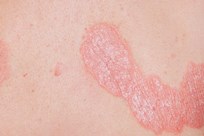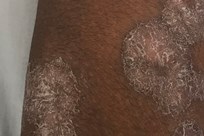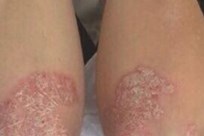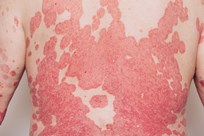Plaque Psoriasis
Plaque psoriasis is the most common type of psoriasis.
About plaque psoriasis
Most people with psoriasis have
plaque psoriasis, either alone or in combination with another type. It gets its
name from the ‘plaques’ that are formed by the build-up of skin cells. These
can be very red, itchy and sore, with white or silvery scales. Plaques are very
well demarcated, meaning you can see where the plaque psoriasis starts and
regular skin stops. Also, if you close your eyes and run your hand over the
skin, you can clearly feel where each plaque begins and ends. The redness is
caused by increased blood flow to the area, required for the speed in which the
skin cells are being replicated. For some people, plaques of psoriasis may be thin or flat to the skin surface, whereas for others they may be much thicker.
How is plaque psoriasis treated?
Plaque psoriasis can occur more or less anywhere on the body, but psoriasis on the palms and soles, or in areas where skin touches skin (such as in the armpits or genitals) is usually a different type. Different types of psoriasis – or psoriasis on different areas of the body – may need different treatments.
A large variety of treatments can be
used to treat plaque psoriasis, depending on how severe the condition is, the
age of the individual, and how much success they have had with other
treatments. The range includes topical
treatments, UV Therapy, systemic and biologic medications.



